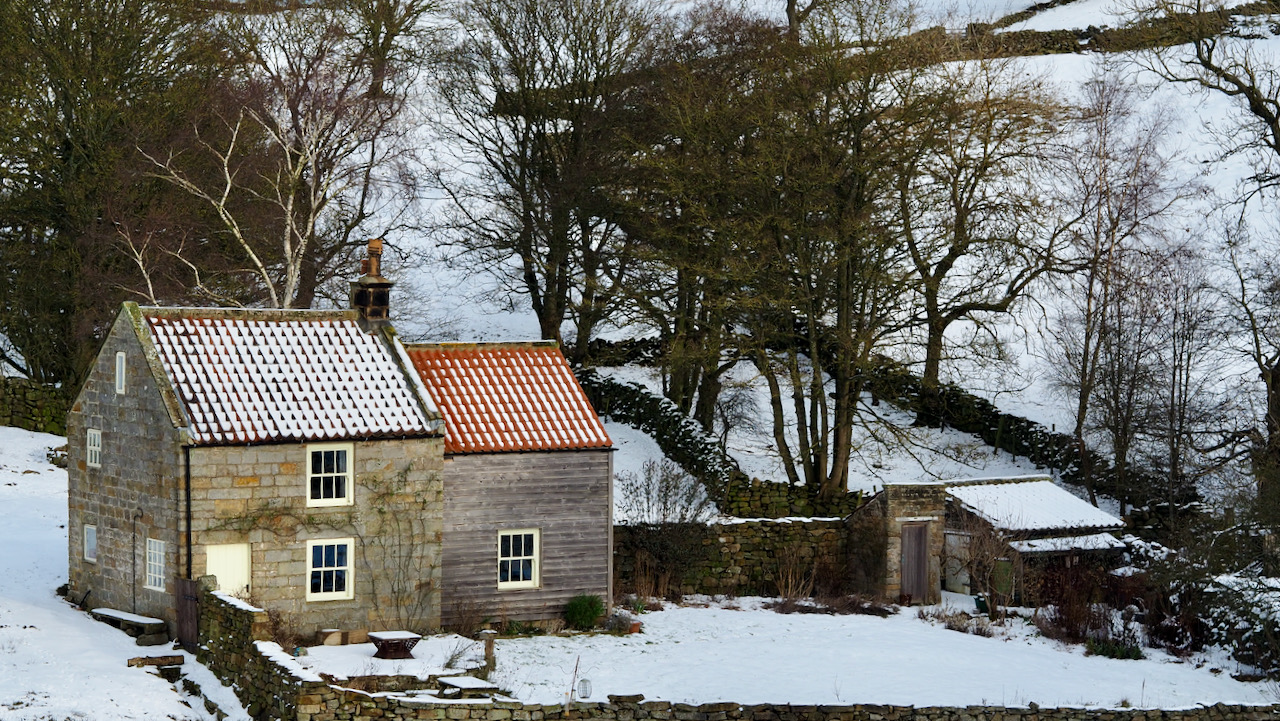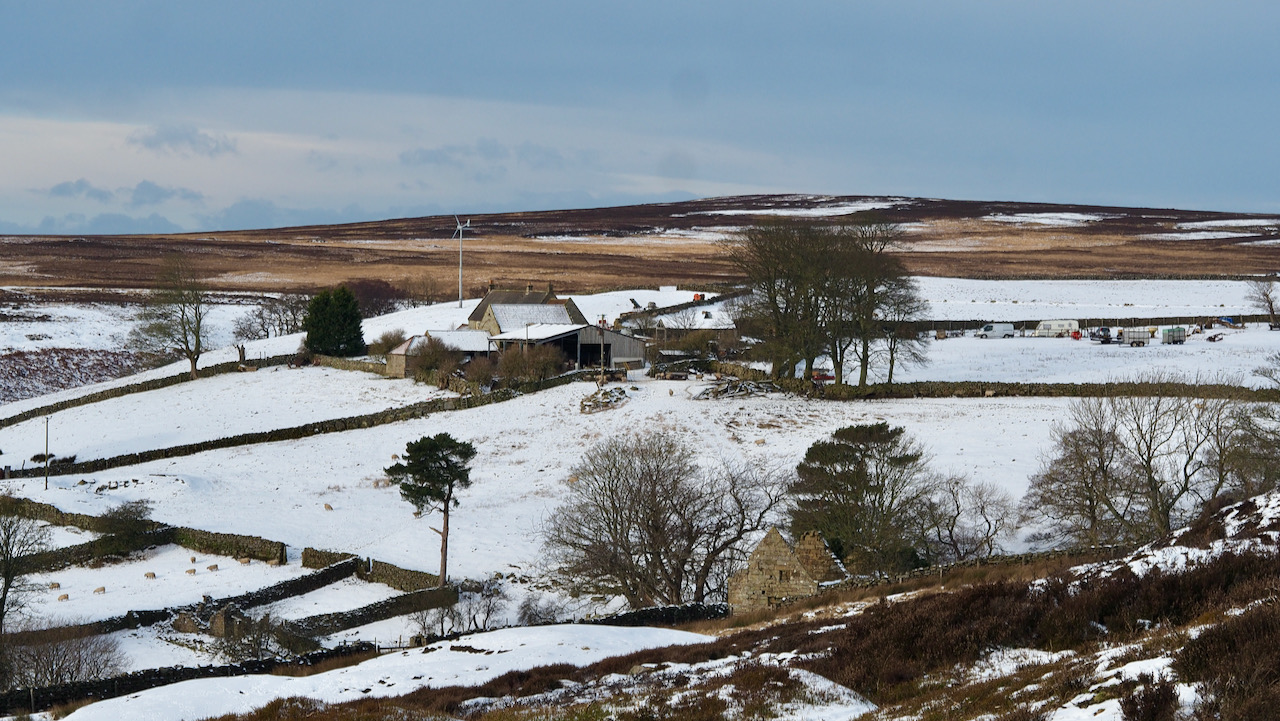Clitherbecks, a very lonely and remote place on the moors near Danby, yet attaining a certain picturesque quality beneath the blanket of snow.
The dale is renowned for its coal mining legacy. Modest, isolated shafts were operated using a ‘horse gin.’ Upon reaching the seam, horizontal headings were dug in various directions until deemed too unsafe. Subsequently, the shaft was abandoned, and a fresh one commenced some fifty metres or so away. These distinctive ‘bell-pits’ now scatter across the moorland.
The first documentary mention of coal can be attested to the 16th century, when work began close to the outcrop below the farm which is today known as Clitherbecks Farm. The remains of this ‘bell-pit’ can be seen in the photo, highlighted by the snow on the extreme left1Denis Goldring..
I said Clitherbecks Farm is a modern name. Historically, this farm was known as Doubting Castle, and retains extant buildings from the 18th century2‘Farm buildings at Castle Doubting’. Heritagegateway.org.uk <https://www.heritagegateway.org.uk/Gateway/Results_Single.aspx?uid=394790c8-a7cc-48f2-84d6-02079aaa3495&resourceID=19191> [accessed 19 January 2024]3NYMNPA HER Record No: 23904..
Just to the left side of that sorry-looking conifer, some ruins can be seen. These were cottages built to house the pit workers4NYMNPA HER Record No: 23906.. A sheep house from the 18th century, just out of shot down in the valley, was converted also to serve the same purpose5‘Rose Cottage’. Heritagegateway.org.uk <https://www.heritagegateway.org.uk/Gateway/Results_Single.aspx?uid=5ac4d2a0-ee3c-4920-8ebd-632236b4e713&resourceID=19191> [accessed 19 January 2024]. This has been modernised and extended, and looks as though as though it is a pretty weekend retreat for a someone with a discerning taste.

Continuing to the right, the remains of a third building intended for the workmen come into view, consisting of the two standing gables6NYMNPA HER Record No: 23905.. Initially, this comprised two separate cottages, but later underwent conversion into one, hence lacking chimneys at its opposing ends. During the year 1907, the house was covered with ivy and was occupied by one Samuel Padgett and his family7‘House Struck By Lightning | Whitby Gazette | Friday 04 January 1907 | British Newspaper Archive’. 2024. Britishnewspaperarchive.co.uk <https://www.britishnewspaperarchive.co.uk/viewer/bl/0001103/19070104/166/0005> [accessed 19 January 2024].
Around three in the morning on 27th December of that year, a furious storm with thunder and lightning rampaged through the area. And guess what? The house got a direct hit from a lightning bolt. The lightning barged in through the gable end, ripping out nine or ten rows of tiles, split the bedroom door in two, and obliterated a grandfather’s clock into bits so small they had to gather up the wreckage and shove it into a butter basket.
Then, the lightning flashed into the kitchen, shattering every piece of glass in the window and scattering them outside. Lucky for the family, they were sleeping at the other end of the house, so no one was hurt. The storm was so terrific and the thunder so deafening that they only realised the house had been struck when Padgett went downstairs to fetch another candle and got a lungful of fumes.
I can not say if this calamity contributed to the eventual abandonment of the house. More research would definitely be welcome.
- 1Denis Goldring.
- 2‘Farm buildings at Castle Doubting’. Heritagegateway.org.uk <https://www.heritagegateway.org.uk/Gateway/Results_Single.aspx?uid=394790c8-a7cc-48f2-84d6-02079aaa3495&resourceID=19191> [accessed 19 January 2024]
- 3NYMNPA HER Record No: 23904.
- 4NYMNPA HER Record No: 23906.
- 5‘Rose Cottage’. Heritagegateway.org.uk <https://www.heritagegateway.org.uk/Gateway/Results_Single.aspx?uid=5ac4d2a0-ee3c-4920-8ebd-632236b4e713&resourceID=19191> [accessed 19 January 2024]
- 6NYMNPA HER Record No: 23905.
- 7‘House Struck By Lightning | Whitby Gazette | Friday 04 January 1907 | British Newspaper Archive’. 2024. Britishnewspaperarchive.co.uk <https://www.britishnewspaperarchive.co.uk/viewer/bl/0001103/19070104/166/0005> [accessed 19 January 2024]

Leave a Reply